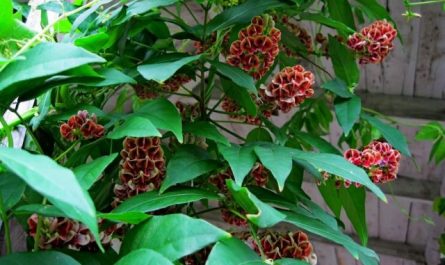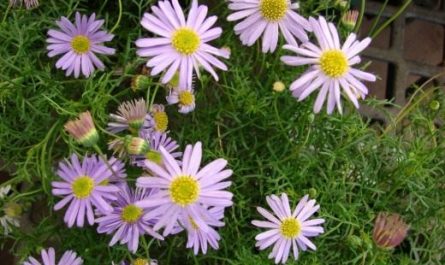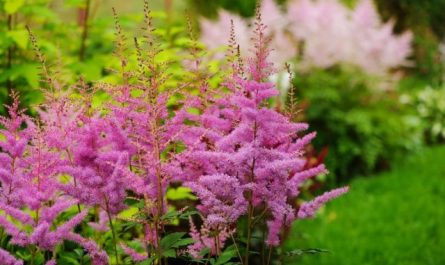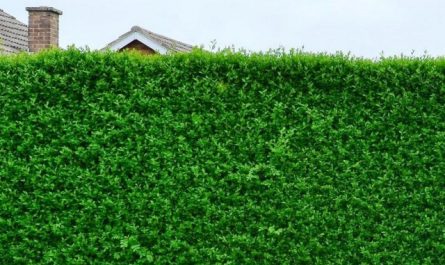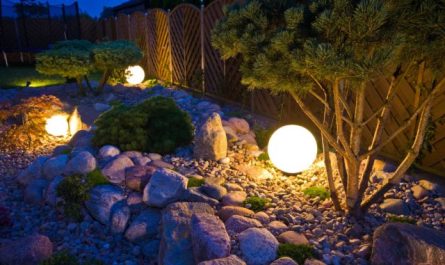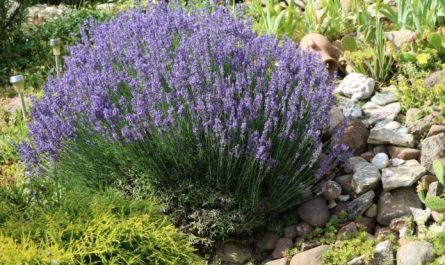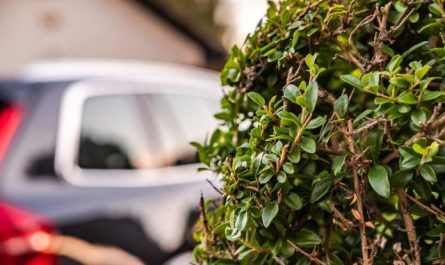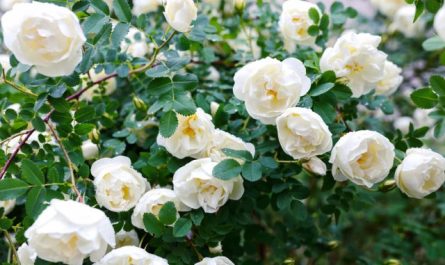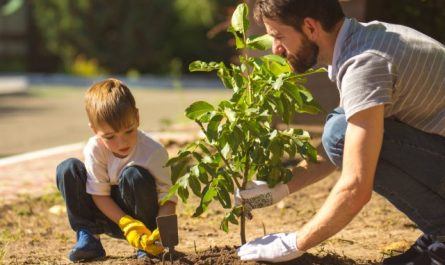Depleted and sandy soil is not the most favorable environment for growing spectacular ornamental plants. Lack of nutrients, regardless of the cause of this problem, forces us to use only the most hardy and unpretentious species in the design of garden plots, surprising with their modest needs. But the correct selection of crops allows you to create colorful landscaping even in such conditions. From “wild” perennials to bright annuals and fashionable shrubs – the list of plants for poor soil is quite significant.

Contents:
Characteristics of poor soils
Infertile, depleted, poor soil – these are terms that almost every gardener and vegetable grower is afraid of. But more often than not, the problem behind them is not as big as it seems. Soil depletion occurs only as a result of improper use. The absence of measures to restore fertility, fertilizing and mandatory processing can lead to the same consequences as the natural characteristics of the soil with a structure that is not capable of retaining nutrients and water.
Poor garden soils come in different forms. Depending on what the “source” of infertility is, they are divided into two types:
- Oppressed or misused. These are originally high-quality and fertile soils that have suffered from irresponsible use. Like any other garden soil, such soil is restored by applying the right fertilizers and high-quality processing, and changing processing methods.
- Naturally poor soilsThese include sandy or rocky soils, which, along with excellent heating and water permeability, also have unpleasant characteristics – the inability to retain both water and nutrients.
Soil correction, preparation for planting and measures to improve the structure, composition and characteristics help to cope with any problem. For depleted soil, especially if the decrease in fertility is due to the neglected state of plantings or the lack of any treatment for several seasons, the restoration process sometimes has to be extended over several years. But if desired, any garden soil can be corrected and renewed.
Restore soil fertility with the help of:
It is not always necessary to improve the soil. In the process of creating a decorative garden, flower beds, borders, groups and other ensembles, infertility is not a contraindication to landscaping. It is just that poor soils are one of the special cases that require an equally special approach. If we are not talking about the characteristics of the entire site, but only about individual zones or small areas, then there is no need to take drastic measures to improve the soil (it happens that there is simply no such opportunity), it is worth assessing the prospects of using such sites for growing special plants and creating unique objects. After all, as the basics of garden art say, there is no such thing as “wrong” or “correct” conditions on the site – there are only shortcomings in planning and selection of plants. And the choice is so great that even for a specific task of landscaping poor soil, you can find your ideal solution.

Features of greening poor soils
When faced with the problem of poor soil, the first thing people often look for is solutions that allow them to change its characteristics. But if you want to use your chance to create an original decoration of the site and use the initial conditions wisely, then there will be no fewer options than soil improvement strategies.
On poor soil you can arrange:
- alpine slide;
- rockery;
- rocky flower bed;
- dry stream and other water bodies or their imitations;
- steppe corner;
- imitation prairies;
- a seating area surrounded by plants;
- flower bed imitating wild plantings;
- landscape array;
- a clearing of ground cover plants with large accent plants;
- a flower bed or mixborder that does not require maintenance;
- herb garden.
And no matter which option you choose, the main thing is to choose the right plants to solve your problem. After all, it is decorative crops that can enliven any corner, breathe life into the most boring area and turn their main problem into a real pride of the garden owners.
Choosing plants that will please the eye even in poor soil is not as difficult a task as it may seem.. If you look closely at the best garden herbaceous perennials and shrubs, you will find quite a few species that can get by with modest soil, have enviable drought resistance, or are afraid of over-watering. When selecting candidates for a place in a flower bed, border, or rock garden, it is always best to focus on these three parameters. Crops that are afraid of excess fertilizers and abundant watering feel especially good in poor soil. If the soil on your site is sandy, you need to look for plants that prefer drainage when planting. However, you should be prepared for the fact that almost all candidates for the design of low-fertility soil are crops that prefer sunny places. Of the shade-tolerant and shade-loving species, only exceptional plants can put up with poor soil.
10 Favorites for Flower Beds and Rabatki on Poor Soil
1. Gaillardia x grandiflora
This name unites the most popular decorative forms and varieties of the brightest of the perennial gaillardias. It easily becomes the main summer star of any composition with its brightly colored, covered with “circles” yellow-red-brown baskets and modest lanceolate leaves.
Compact varieties of half a meter in height are as common as larger varieties up to 70-80 cm in height. The beauty of the gaillardia color is preserved even on the poorest soil, but the duration of flowering, starting at the beginning of summer, will directly depend on the quality of care: only 2-3 feedings per season will allow this plant to bloom as well as when planted in fertile soil. Gaillardia prefers dry and light soils, these are excellent candidates for poor sandy soil.

2. Common Oregano (Origanum vulgare)
This plant rightfully claims to be the most underrated of herbaceous perennials. Oregano is often perceived only as a medicinal and spicy plant, but in the meantime, it has no equal in its ability to grow in any conditions and at the same time retain its beauty.
Oregano forms charmingly dense bushes from 30 cm to half a meter high, the density and size of which are easily controlled by pruning. The rich color of small rounded leaves emphasizes the beauty of the lacy shields of inflorescences, which do not lose their beauty even after drying. Oregano places textured spots, it is fragrant, adds volume to compositions, looks elegant regardless of the time of year. This is one of the most versatile plants that are in the arsenal of modern landscape design. It is suitable for depleted and neglected soil.

3. Goldenrod (Solidago virgaurea)
This is one of the most variable herbaceous perennials not only in size, flowering and growth pattern, but also in terms of requirements for the growing site. The most modest natural species of goldenrod, also known as goldenrod or autumn mimosa, adapts well to even the poorest soils and can grow in both heavy and light soil (unlike other species of goldenrod).
The dense branching of straight shoots allows goldenrod to create stunningly beautiful arrays from 60 cm to more than 2 m high. The lanceolate leaves are arranged alternately and stand out with a rather dark color. Complex panicles and brushes of inflorescences are memorable thanks to small but beautiful baskets with a bright yellow-golden tone of ligulate flowers. Goldenrod blooms late, is one of the best autumn perennials, capable of growing in very difficult conditions.

4. Steller’s Wormwood (Artemisia stelleriana)
A favorite for rock gardens, the best companion for gravel backfill, the most durable groundcover species – these are the epithets that this magnificent and compact perennial species of wormwood deserves.
Artemisia stelleriana forms a dense cover of spreading half-meter shoots and attracts even from afar with luxurious carved silver leaves that seem to glow against the background of stones. Loose inflorescences consisting of small yellowish baskets can hide the entire beauty of the plant, so it is better not to allow it to bloom. Exceptional drought resistance and the disclosure of the beauty of the silver edge only on poor soils makes this plant, like other wormwoods, a favorite for decorating depleted, rocky and sandy soils.

5. Eryngium planum and Eryngium bourgatii
Most eryngiums, despite their invulnerable appearance, achieve their greatest decorativeness on fertile soil. But flat-leaved eryngium and Bourgeois eryngium are an exception to the rule. They are capable of growing in the densest or poorest soils, fully displaying their blue color only when there is a shortage of nutrients.
Eryngium planifolium (eryngium planum) is a beautiful perennial plant, one meter high, with shoots branching at the top and hard, thin leaves, in which all attention is drawn to the ovoid heads of inflorescences up to 2 cm in diameter.
Eryngium Bourgeois (Eryngium bourgatii) – a contender for the title of the most unpretentious eryngium. At a height of up to 40 cm, it forms wide, sometimes lodging bushes, flaunts bluish, with white fluff, strongly dissected leaves and luminous round heads of inflorescences with very large wrapper leaves. The plant is amazingly striking and at the same time – hardy.

6. Purple mullein (Verbascum phoeniceum)
Among large herbaceous perennials with powerful vertical inflorescences, perhaps only mullein prefers poor rather than nutritious soil. This is a special plant in every sense. Hybrid mulleins and other species grow and develop well on poor soil, but the absolute favorite is purple mullein.
At a height of up to 1 m, this plant with powerful straight shoots and large basal leaves surprises with the beauty of simple but large brushes of inflorescences. Graceful flowers with a purple corolla are a true decoration of this large plant. It is difficult to imagine any garden without flowering mullein in the first half of summer.

7. Millipede (Achillea)
Even the most spectacular varieties of hybrid yarrows remain among the most unpretentious garden plants. This perennial grows well in any soil, even if we are talking about depleted soil. The exquisite colors of the large inflorescence shields of the best modern varieties offer to enjoy cherry, coral, orange, golden shades. But species yarrows are also very good, although their flowering is more modest.
Cushion-shaped yarrows show their characteristics especially brightly on poor soils. All yarrows are easily recognizable. They are perennials that form dense turfs with numerous straight shoots, alternate whole or pinnate leaves and small baskets of inflorescences collected in dense corymbs, umbrellas and brushes. Blooming yarrows add tiers and structure to compositions.

8. Ajuga
All representatives of this genus surprise with their ability to grow even in the most unsuitable conditions, sometimes radically different in their soil characteristics. The greatest decorative flowering of tenacious plants is achieved in nutritious soil, but the beauty of the leaves and original colors are better displayed in poor soil. Creeping shoots, rooting in the axils of the leaves, allow tenacious plants to effectively fill the soil.
The stolon shoots are usually hidden under decorative leaves collected in rosettes. Large, usually with a beautiful serrated edge, ajugas offer a huge selection of unusual – dark, chocolate purple and ink – colors. Flowers in spike-shaped inflorescences are decorative due to the intense blue-violet colors. Plants are very different from each other, but always look like luxurious and original decorative-deciduous wild ones, capable of taking root anywhere.

9. Sedum
Dividing all garden sedums into two groups – those preferring poor or nutritious soils – makes it easy to find luxurious plants for growing on all types of infertile soils. Preferring stony, sandy and sandy loam soils, sedums of the first group are low ground cover species with brightly colored fleshy leaves and abundant flowering.
From spectacular sedum hybrid (Hybrid stonecrop) with its flat wedge-shaped leaves and tall umbels of yellow-orange inflorescences to low evergreen mats white sedum (Sedum album) and shoots resembling prickly snakes Sedum sedum (Sedum ochroleucum) – there is plenty to choose from.

10. Meadowsweet (Filipendula vulgaris)
This is one of the most undemanding (and least moisture-loving) types of meadowsweet. Meadowsweet is a powerful, delicate and very effective perennial that looks great both during and after flowering. The height from 40 cm to 1 m allows meadowsweet to easily fit into any composition.
The pinnately dissected, lacy large leaves create a luxurious basal rosette, emphasizing the beauty of the flowering. Large cream or white flowers are collected in dense panicles of inflorescences, capable of reaching 15 cm in length. Meadowsweet blooms in late spring, delighting with a luxurious foam of flowering for almost a month. But the leaves of the plant continue to decorate compositions further.

Other plants for poor soil
The list of perennials that cope well with nutrient deficiencies is not limited to the top ten listed above. Many species perennials associated with landscape design also feel good in poor and sandy soils.
In poor soils, the following perform well:
- oak sage (Salvia x sylvestris);
- tansy (Tanacetum);
- Echinops ritro and other species of Echinops;
- all types of perennial and annual poppies (representatives of the genus Papaver);
- Alpine columbine (Aquilegia alpina), fan-shaped columbine (Aquilegia flabellata), green-flowered columbine (Aquilegia viridiflora), dark columbine (Aquilegia atrata);
- pearl anaphalis (Anaphalis margaritaceae);
- cornflowers large-headed (Centaurea macrocephala), mountain (Centaurea montana), Russian (Centaurea ruthenica);
- Tatar kermek (Goniolimon tataricum);
- Leathery adonis (Silene coronaria, better known as Lychnis coronaria);
- Heliopsis helianthoides;
- Evening primrose (Oenothera fruticosa);
- Gypsophila paniculata;
- hyssop (Hyssopus officinalis);
- Macleaya cordata;
- all types of monarda (Monarda), provided that fertilizing is carried out during the season;
- all kinds of Mediterranean herbs – from thyme and tarragon to lavender and rosemary.



The choice of annuals that thrive in the most difficult conditions is also quite rich. Sandy, dense or poorly fertile neglected soils are not at all contraindicated for growing brightly blooming seasonal stars. Such annuals include:
- cosmos with its airiness, carved foliage, quivering bright pastel flowers; cheerful and uniquely tender, but also striking in its endurance;
- an original and bright summer plant with a dazzling color of touching flowers – large-flowered purslane (Portulaca grandiflora);
- The original flowering beauty Cleome, which can cope with any drought;
- arctotis, whose flowers, in terms of the brightness of their colors and structure, would resemble gerberas, if not for the elegance of the touching plants themselves;
- annual anacyclus (Anacyclus), which boasts inflorescences that are so similar to daisies;
- calendula (Calendula officinalis), which can become a decoration of any garden under any conditions;
- Marigolds (Tagetes) never go out of fashion;
- low-growing, up to 30 cm in height, forming a beautiful mass of dark leaves and large golden baskets with a watercolour transition, Gazania rigens.
Species that are undemanding to soil fertility can be found among both shrubs and trees. On poor soils, you can grow junipers (Juniperus), yews (Taxus), acacias (Acacia), extremely hardy wrinkled rose hips (Rosa rugosa), spirea (Spiraea), mock orange (Philadelphus), silver birch (Betula pendula), willows (Salix), silver oleaster (Elaeagnus commutata), alder buckthorn (Frangula alnus), field maple (field maple), steppe almond (Prunus tenella), bladder senna (Physocarpus opulifolius), white snowberry (Symphoricarpos albus), hawthorns (Crataegus), white dogwood (Cornus alba), etc.




